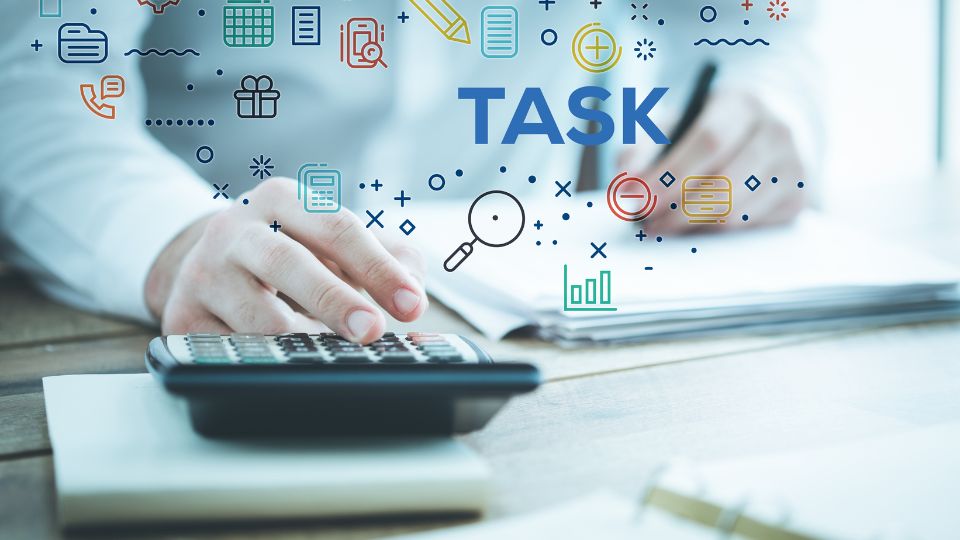Best Practices for Managing Tasks
Effective task management is essential for maintaining productivity, meeting deadlines, and achieving project goals. By applying the right strategies, teams can streamline workflows, enhance collaboration, and ensure that tasks are completed efficiently. Below are some key best practices for managing tasks that help teams stay organized and focused.
Key Best Practices for Task Management
- Prioritize Tasks
- Identify Priorities: Categorize tasks based on their importance and urgency. Use a priority matrix (e.g., the Eisenhower Matrix) to differentiate between high, medium, and low priority tasks.
- Focus on Critical Tasks: Ensure that critical tasks are tackled first to avoid delays and prevent bottlenecks in the workflow.
- Identify Priorities: Categorize tasks based on their importance and urgency. Use a priority matrix (e.g., the Eisenhower Matrix) to differentiate between high, medium, and low priority tasks.
- Set Clear Objectives
- Define Task Outcomes: Clearly outline the objectives and expected outcomes for each task. This provides clarity on what needs to be achieved and ensures team members are aligned with the project’s goals.
- Define Task Outcomes: Clearly outline the objectives and expected outcomes for each task. This provides clarity on what needs to be achieved and ensures team members are aligned with the project’s goals.
- Break Down Tasks
- Divide Larger Tasks: Split complex tasks into smaller, more manageable sub-tasks. This makes it easier to track progress, allocate resources effectively, and identify potential challenges.
- Reduce Overwhelm: Breaking tasks into smaller chunks makes the work feel more achievable and less overwhelming for team members.
- Divide Larger Tasks: Split complex tasks into smaller, more manageable sub-tasks. This makes it easier to track progress, allocate resources effectively, and identify potential challenges.
- Assign Responsibilities
- Clarify Roles: Clearly assign tasks to team members, ensuring that each person knows their responsibilities. This helps foster accountability and prevents confusion about who is handling each task.
- Match Skills and Tasks: Assign tasks based on team members’ skills and expertise to ensure optimal performance.
- Clarify Roles: Clearly assign tasks to team members, ensuring that each person knows their responsibilities. This helps foster accountability and prevents confusion about who is handling each task.
- Use Task Management Tools
- Centralized Platforms: Leverage task management tools like Vabro, Trello, Asana, or Microsoft To Do to organize tasks, track deadlines, and monitor progress.
- Real-Time Updates: These tools provide a centralized platform for communication, allowing team members to see task updates, and ensure alignment.
- Centralized Platforms: Leverage task management tools like Vabro, Trello, Asana, or Microsoft To Do to organize tasks, track deadlines, and monitor progress.
- Set Realistic Deadlines
- Consider Complexity: When setting deadlines, consider the complexity and resources required for each task. Realistic deadlines prevent burnout and ensure quality results.
- Be Flexible: Understand that tasks may evolve or face challenges, and be prepared to adjust deadlines if necessary.
- Consider Complexity: When setting deadlines, consider the complexity and resources required for each task. Realistic deadlines prevent burnout and ensure quality results.
- Monitor Progress Regularly
- Track Status: Continuously review task progress through dashboards or reports. This helps you stay informed on task completion and identify any potential delays or roadblocks early on.
- Intervene When Needed: If tasks fall behind or issues arise, address them promptly to avoid project delays.
- Track Status: Continuously review task progress through dashboards or reports. This helps you stay informed on task completion and identify any potential delays or roadblocks early on.
- Encourage Communication and Collaboration
- Open Communication Channels: Foster a culture of open communication and collaboration among team members. Tools like Slack or Microsoft Teams, integrated with task management platforms, can facilitate real-time updates and feedback.
- Frequent Check-Ins: Hold regular meetings or check-ins to discuss progress and address concerns before they escalate.
- Open Communication Channels: Foster a culture of open communication and collaboration among team members. Tools like Slack or Microsoft Teams, integrated with task management platforms, can facilitate real-time updates and feedback.
- Review and Reflect
- Evaluate Task Performance: After completing tasks, take the time to review what went well and what didn’t. This allows for continuous improvement and helps refine processes for future projects.
- Gather Team Feedback: Encourage feedback from team members about task management processes to identify areas for improvement.
- Evaluate Task Performance: After completing tasks, take the time to review what went well and what didn’t. This allows for continuous improvement and helps refine processes for future projects.
Benefits of Implementing Task Management Best Practices
- Increased Efficiency: Prioritizing tasks and setting clear objectives helps teams focus on high-impact activities, improving overall productivity.
- Improved Collaboration: Using task management tools and encouraging communication fosters teamwork and ensures that everyone is aligned and informed.
- Enhanced Accountability: Clearly defined roles and responsibilities help ensure that team members take ownership of their tasks, leading to higher accountability and better outcomes.
Conclusion
Implementing best practices for managing tasks is essential for any team aiming to boost productivity and achieve project goals. By prioritizing tasks, setting clear objectives, breaking down large tasks, and using the right tools, teams can streamline workflows and increase their chances of success. These practices not only enhance efficiency and collaboration but also improve accountability, leading to better project outcomes and team satisfaction.
